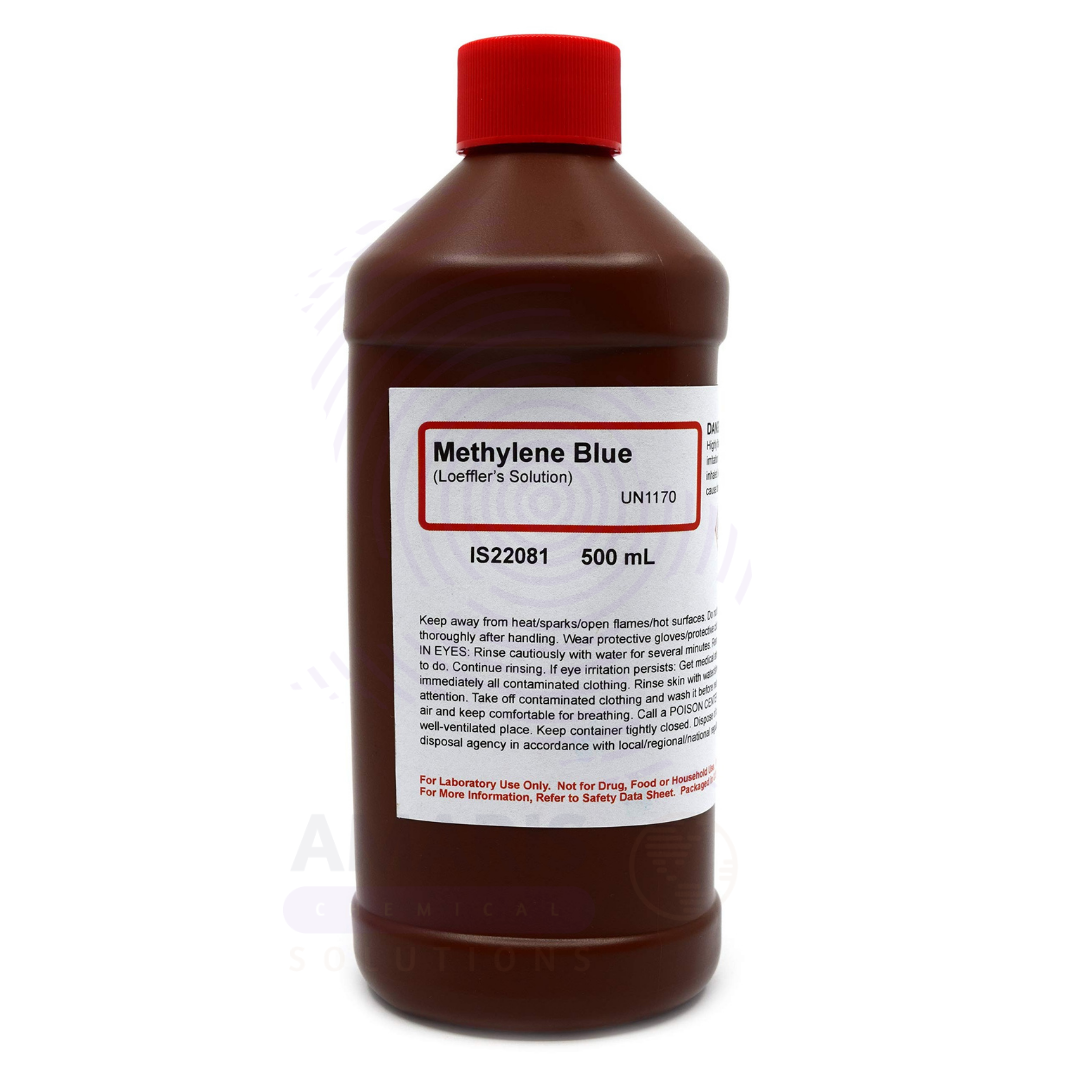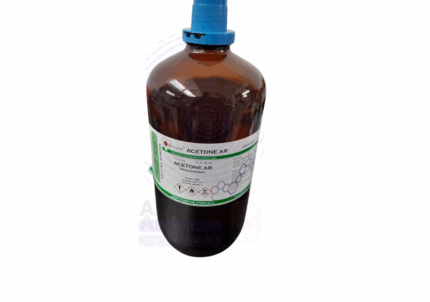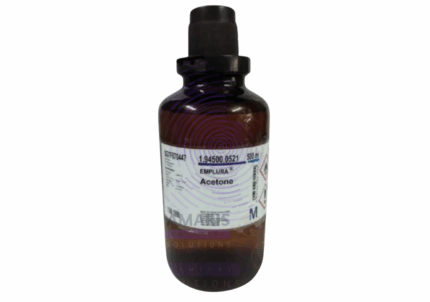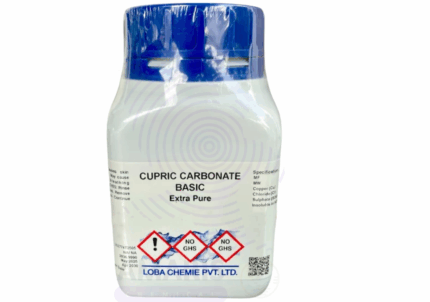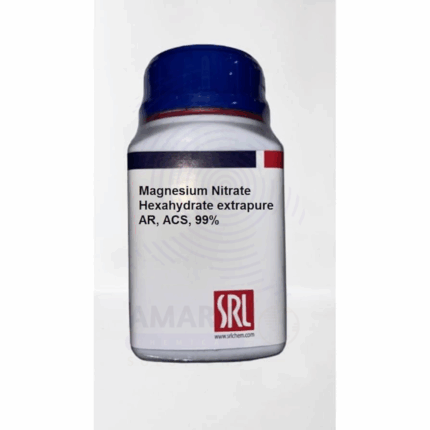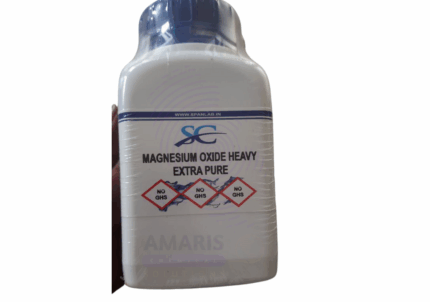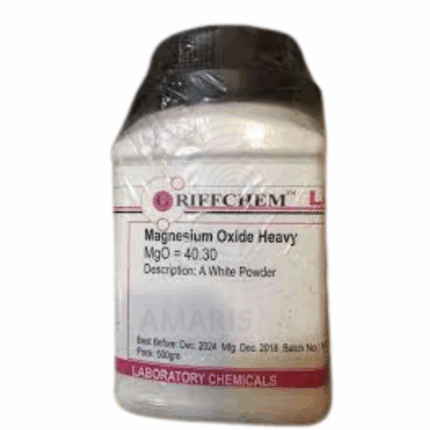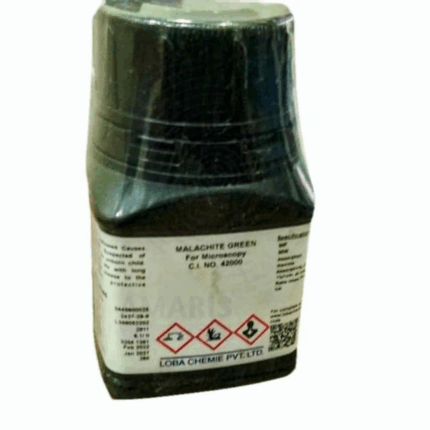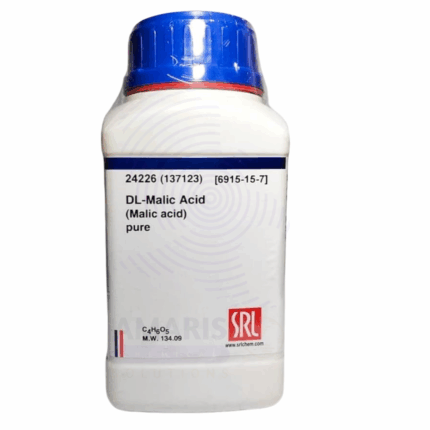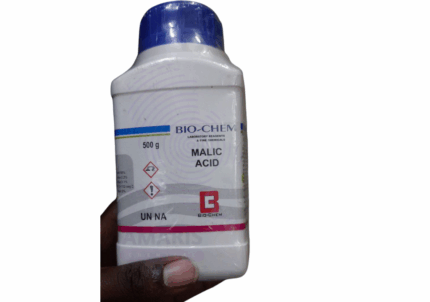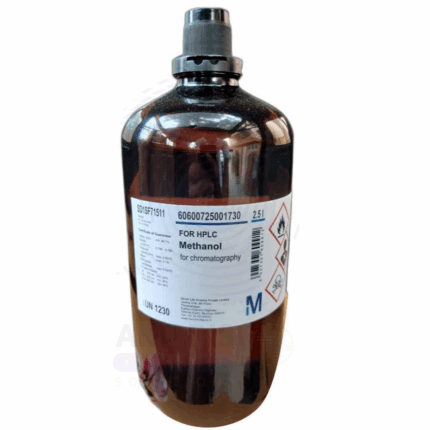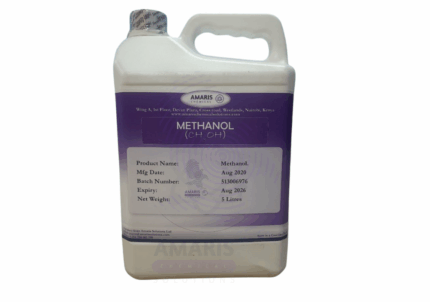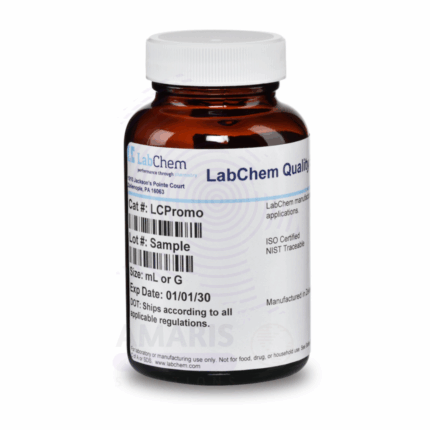Methylene Blue Solution Extra Pure
$ 17.84 Original price was: $ 17.84.$ 17.76Current price is: $ 17.76.
Methylene Blue Solution Extra Pure is a ready-to-use aqueous formulation of high-purity methylene blue dye, ideal for laboratory, biological, and analytical applications. It is commonly employed as a vital stain in microscopy to highlight cellular components such as nuclei and mitochondria, especially in live or fixed cells. This solution also functions as a redox indicator in various chemical experiments and is used in microbiology for bacterial identification and differentiation. With its extra pure quality, the solution delivers consistent and precise staining results, making it a reliable tool for research, diagnostics, and teaching laboratories.
Methylene Blue Solution Extra Pure
Primary Uses
- Biological Stain – Used directly as a prepared staining solution in microbiology and histology to highlight cell components, especially nuclei and cytoplasm.
- Bacteriological Applications – Commonly applied for identifying bacteria, particularly in simple staining protocols.
Secondary Uses
- Aquarium & Hatchery Treatment – Used to treat fish eggs and freshwater fish against fungal and some parasitic infections.
- Educational Demonstrations – Ideal for quick cell staining in school and college laboratories.
- Visual Aid in Slide Preparation – Offers clarity in wet mount preparations for viewing under light microscopes.
| PACK SIZE |
500ml |
|---|
1. Basic Identification Attributes
- Chemical Name: Methylene Blue Solution
- Active Ingredient: Methylene Blue (C₁₆H₁₈ClN₃S)
- CAS Number: 61-73-4 (for Methylene Blue)
- Appearance: Deep blue liquid solution
- Odor: Odorless or faint
- Solubility: Completely soluble in water
- Grade: Extra Pure
- Concentration (typical): 0.1% to 1% w/v (may vary by supplier)
2. Safety & Hazard Attributes
- GHS Classification:
- Eye Irritant (Category 2A)
- Skin Irritant (Category 2)
- Acute Toxicity – Oral (Category 4, in large doses)
- Hazard Statements:
- H302: Harmful if swallowed
- H315: Causes skin irritation
- H319: Causes serious eye irritation
- Precautionary Statements:
- P280: Wear protective gloves and eye protection
- P305+P351+P338: IF IN EYES – Rinse with water for several minutes
- P301+P312: IF SWALLOWED – Call a POISON CENTER if unwell
- PPE Required:
- Gloves
- Protective eyewear
- Lab coat
- First Aid Measures:
- Eyes: Rinse with water, seek medical help if irritation persists
- Skin: Wash with soap and water
- Inhalation: Not likely a hazard, ensure good ventilation
- Ingestion: Rinse mouth, do not induce vomiting
- Fire Hazard:
- Water-based, not flammable
- For dry residues, use water spray, CO₂, or dry chemical extinguishers
3. Storage & Handling
- Storage Conditions:
- Store in tightly closed bottles
- Keep away from light and heat
- Avoid freezing and contamination
- Handling Notes:
- Handle with care—stains are hard to remove
- Avoid contact with skin, clothes, and lab surfaces
4. Laboratory Applications
- Primary Uses:
- Microscopy stain (visualization of cellular structures and bacteria)
- Biochemical redox indicator
- Teaching and demonstration purposes
- Secondary Uses:
- Aquaculture treatment (parasitic/fungal control in fish)
- Redox reaction demonstrations in chemistry education
- Medical diagnostic applications (e.g., in methylene blue dye tests)
SAFETY PRECAUTIONS
Personal Protective Equipment (PPE):
- Wear a lab coat, nitrile gloves, and chemical splash goggles.
- Use in a well-ventilated area or under a fume hood.
Handling:
- Avoid contact with skin, eyes, and clothing.
- Prevent ingestion and inhalation of vapors or mist.
- Wash hands thoroughly after use.
- Handle with care to prevent spills and stains.
Storage:
- Store in a tightly closed container in a cool, dry, and well-ventilated area.
- Protect from light, heat, and incompatible substances (e.g., strong oxidizers or acids).
FIRST AID MEASURES
Inhalation:
- Move the person to fresh air immediately.
- Seek medical attention if symptoms like difficulty breathing occur.
Skin Contact:
- Wash thoroughly with soap and water.
- Remove stained or contaminated clothing.
- Seek medical advice if irritation develops.
Eye Contact:
- Rinse cautiously with clean water for at least 15 minutes.
- Remove contact lenses if easy to do.
- Continue rinsing and get medical attention.
Ingestion:
- Rinse mouth with water.
- Do not induce vomiting.
- Seek medical advice immediately.
FIRE FIGHTING MEASURES
Flammability:
- The aqueous solution is non-flammable, but organic components may burn under fire conditions.
Extinguishing Media:
- Use CO₂, dry chemical, foam, or water spray depending on surrounding materials.
Hazardous Combustion Products:
- May emit carbon oxides, sulfur oxides, and nitrogen oxides when burned.
Firefighter Protection:
- Wear self-contained breathing apparatus (SCBA) and full protective gear during firefighting.


 Preservatives(food)
Preservatives(food) Flavor Enhancers
Flavor Enhancers Acidulants
Acidulants Sweeteners
Sweeteners Antioxidants
Antioxidants Colorants(food)
Colorants(food) Nutraceutical Ingredients (food)
Nutraceutical Ingredients (food) Nutrient Supplements
Nutrient Supplements Emulsifiers
Emulsifiers
 Collectors
Collectors Dust Suppressants
Dust Suppressants Explosives and Blasting Agents
Explosives and Blasting Agents Flocculants and Coagulants
Flocculants and Coagulants Frothers
Frothers Leaching Agents
Leaching Agents pH Modifiers
pH Modifiers Precious Metal Extraction Agents
Precious Metal Extraction Agents
 Antioxidants(plastic)
Antioxidants(plastic) Colorants (Pigments, Dyes)
Colorants (Pigments, Dyes) Fillers and Reinforcements
Fillers and Reinforcements Flame Retardants
Flame Retardants Monomers
Monomers Plasticizers
Plasticizers Polymerization Initiators
Polymerization Initiators Stabilizers (UV, Heat)
Stabilizers (UV, Heat)
 Antifoaming Agents
Antifoaming Agents Chelating Agents
Chelating Agents Coagulants and Flocculants
Coagulants and Flocculants Corrosion Inhibitors
Corrosion Inhibitors Disinfectants and Biocides
Disinfectants and Biocides Oxidizing Agents
Oxidizing Agents pH Adjusters
pH Adjusters Scale Inhibitors( water)
Scale Inhibitors( water)
 Antioxidants(cosmetic)
Antioxidants(cosmetic) Emollients
Emollients Fragrances and Essential Oils
Fragrances and Essential Oils Humectants
Humectants Preservatives
Preservatives Surfactants(cosmetic)
Surfactants(cosmetic) Thickeners
Thickeners UV Filters
UV Filters
 Fertilizers
Fertilizers Soil Conditioners
Soil Conditioners Plant Growth Regulators
Plant Growth Regulators Animal Feed Additives
Animal Feed Additives Biostimulants
Biostimulants Pesticides (Herbicides, Insecticides, Fungicides)
Pesticides (Herbicides, Insecticides, Fungicides)
 Active Pharmaceutical Ingredients (APIs)
Active Pharmaceutical Ingredients (APIs) Excipients
Excipients Solvents(pharmaceutical)
Solvents(pharmaceutical) Antibiotics
Antibiotics Antiseptics and Disinfectants
Antiseptics and Disinfectants Vaccine Adjuvants
Vaccine Adjuvants Nutraceutical Ingredients (pharmaceutical)
Nutraceutical Ingredients (pharmaceutical) Analgesics & Antipyretics
Analgesics & Antipyretics
 Analytical Reagents
Analytical Reagents Solvents(lab)
Solvents(lab) Chromatography Chemicals
Chromatography Chemicals Spectroscopy Reagents
Spectroscopy Reagents microbiology-and-cell-culture-reagents
microbiology-and-cell-culture-reagents Molecular Biology Reagents
Molecular Biology Reagents Biochemical Reagents
Biochemical Reagents Inorganic and Organic Standards
Inorganic and Organic Standards Laboratory Safety Chemicals
Laboratory Safety Chemicals Specialty Laboratory Chemicals(Special Laboratory Equipment)
Specialty Laboratory Chemicals(Special Laboratory Equipment)
 Demulsifiers
Demulsifiers Hydraulic Fracturing Fluids
Hydraulic Fracturing Fluids Scale Inhibitors(oil)
Scale Inhibitors(oil) Surfactants(oil)
Surfactants(oil) Drilling Fluids
Drilling Fluids
 Dyes and Pigments
Dyes and Pigments Bleaching Agents
Bleaching Agents Softening Agents
Softening Agents Finishing Agents
Finishing Agents Antistatic Agents
Antistatic Agents
 Admixtures
Admixtures Waterproofing Agents
Waterproofing Agents Sealants and Adhesives
Sealants and Adhesives Curing Compounds
Curing Compounds Concrete Repair Chemicals
Concrete Repair Chemicals Anti-Corrosion Coatings
Anti-Corrosion Coatings
 Surfactants(cleaning)
Surfactants(cleaning) Builders
Builders Enzymes
Enzymes Solvents (Cleaning)
Solvents (Cleaning) Fragrances
Fragrances
 Electronic Chemicals
Electronic Chemicals Catalysts
Catalysts Lubricants
Lubricants Photographic Chemicals
Photographic Chemicals Refrigerants
Refrigerants Automotive chemicals
Automotive chemicals Pyrotechnic Chemicals
Pyrotechnic Chemicals
 Biodegradable Surfactants
Biodegradable Surfactants Bio-based Solvents
Bio-based Solvents Renewable Polymers
Renewable Polymers Carbon Capture Chemicals
Carbon Capture Chemicals Wastewater Treatment Chemicals
Wastewater Treatment Chemicals
 Pigments
Pigments Solvents(paint)
Solvents(paint) Specialty Coatings
Specialty Coatings Binders/Resins
Binders/Resins Additives
Additives Driers
Driers Anti-Corrosion Agents
Anti-Corrosion Agents Functional Coatings
Functional Coatings Application-Specific Coatings
Application-Specific Coatings
 Fresh Herbs
Fresh Herbs Ground Spices
Ground Spices Whole Spices
Whole Spices Spice Blends
Spice Blends Dried Herbs
Dried Herbs
 Leavening Agents
Leavening Agents Dough Conditioners
Dough Conditioners Flour Treatments
Flour Treatments Fat Replacers
Fat Replacers Decoratives
Decoratives Preservatives(baking)
Preservatives(baking)
 Plasticizers & Softeners
Plasticizers & Softeners Reinforcing Agents
Reinforcing Agents Adhesion Promoters
Adhesion Promoters Vulcanizing Agents
Vulcanizing Agents Antidegradants
Antidegradants Blowing Agents
Blowing Agents Fillers & Extenders
Fillers & Extenders Accelerators & Retarders
Accelerators & Retarders